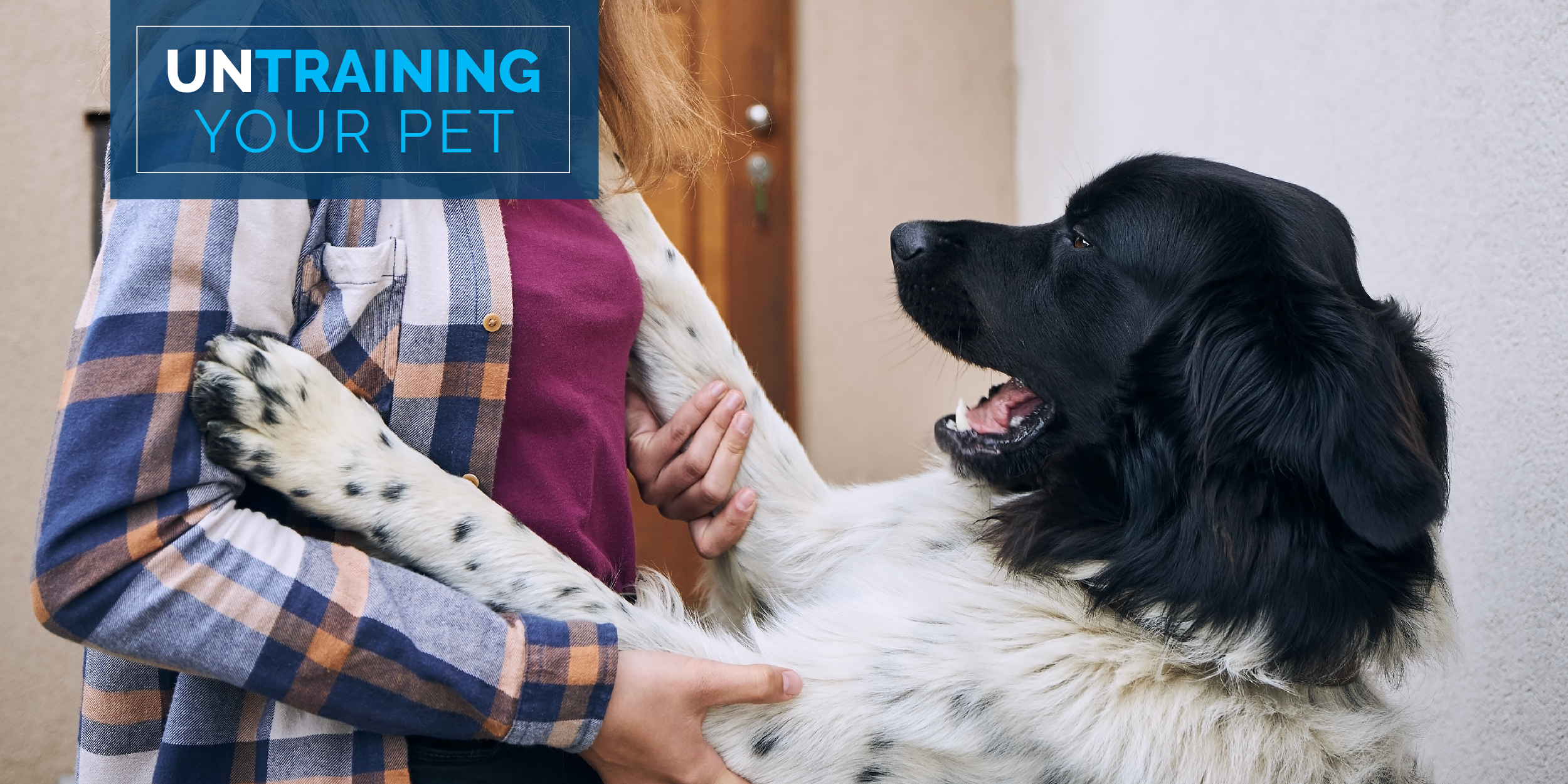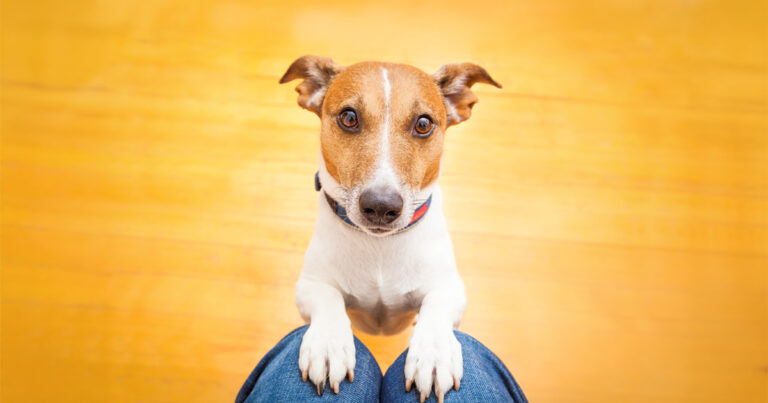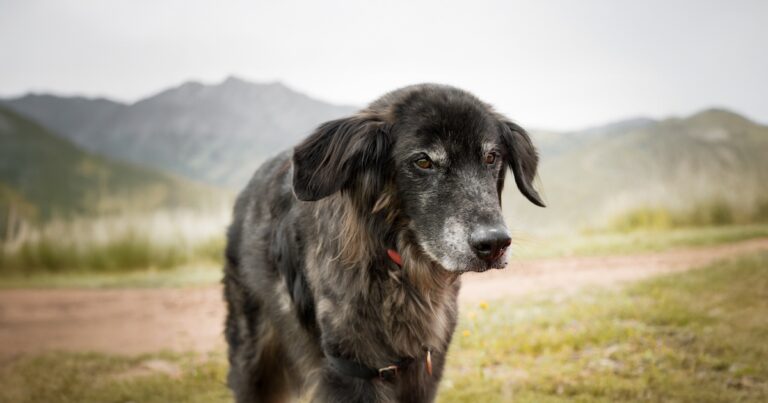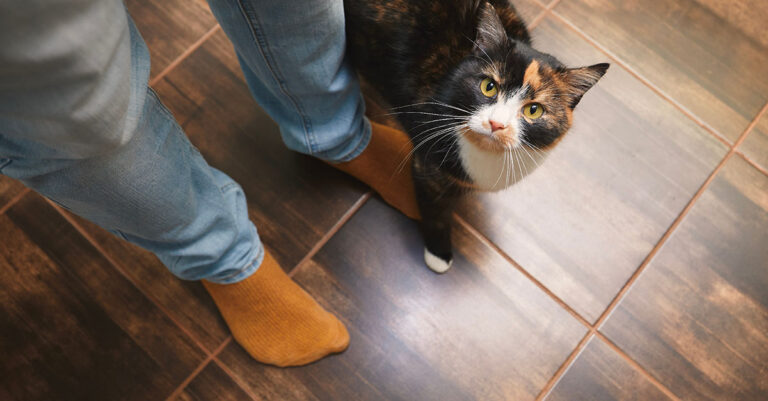Welcome to our “Untraining Your Pet” series, where we help you “untrain” your pet from those naughty or annoying bad habits and get them back to being the goodest boys and girls.
There’s no question that a puppy jumping excitedly around your legs when you come in the door is an adorable way to be greeted by your favorite furry friend. But… what happens when they’re still doing this behavior as an adult? Your family and friends probably won’t find the jumping behavior quite as cute when their shirt gets ripped or their white pants now have a paw-print pattern. Or, worse still, they get knocked over by your boisterous greeter, which is a real possibility if your dog is a large or giant breed — a Great Dane on their hind legs is taller than most people!
If you’d like to get your dog’s jumping up under control, we’ve got some tips for turning your out-of-control jumper into a calm and gentle greeter.
Why Do Dogs Jump on You?
Jumping is a natural behavior dogs use during play and when meeting each other. Dogs like to greet each other nose-to-nose, so that’s what they’re trying to do when they jump up on you — reach your nose that’s way up there. Some dogs also use jumping to get your attention, whether that’s positive attention and you react by playing with them, or negative attention and you tell them to get down. Either way, they stopped you from doing whatever you were doing and got your attention. And then there are dogs who have so much pent-up energy that they use jumping on you and bouncing off the walls (literally) as a way to release it. So, jumping is a normal behavior for dogs; you just need to teach them when and where jumping is appropriate.
Stick with the No-Jumping Rule
Consistency. It’s going to be a recurrent theme for our “Untrain Your Pet” series, but it’s an important point and one worth mentioning every time. Once you decide to stop your dog from jumping on people, everyone in your household, your visitors and even strangers at the dog park, need to know that jumping is no longer an acceptable way for your dog to greet people. It’s confusing for your dog if they’re allowed to jump up during playtime but not when Grandma comes to visit or when you’ve got your hands full of groceries. So no jumping on people has to mean no jumping on people — ever again.
Change the Greeting Style
The end goal of stopping your dog from jumping on people is to train them to do something else instead. It’s up to you to decide how you would like your dog to greet people. They could sit or lie down or have a special mat where they wait for people to come to them. Whichever command you decide to use, the idea is to teach your dog that when someone comes in the door, they do that command instead of jumping up. It helps if they know the command already, they’re just learning how to follow the command when they’re really excited. It will take time, patience and a lot of rewards, but hopefully soon you can stop wrestling with your dog and saying “down” as you’re trying to usher visitors in through the front door.
The best case scenario is to train your puppy right from the start not to jump up. Of course, this is sometimes easier said than done with a playful little puppy whose jumps don’t bother you. But it will be better for both of you long term.
While You’re Waiting…
Training your dog to follow a command instead of jumping is going to take some time, so here are some pointers on how to handle jumping while you’re in training.
Hello from Afar
While your dog is learning a new greeting method, you can manage their jumping urges by limiting jumping opportunities with a pet gate or crate. This reinforces the “We’re not jumping ever again” rule and helps stop you inadvertently giving your dog attention (even though it’s negative) because you’re responding to their jumping. Once your dog is over the initial excitement of a new friend in the house, you can see if they will calmly greet your visitor.
You can also use a head collar or no-pull harness and leash to control your dog’s jumps. Ask your visitor to wait until your dog is calm before approaching them. If your dog tries to jump, gently turn and lead them away. Once they’re calm you can try again.
Turn Away or Walk Away
There are going to be times when your dog jumps on you while they’re in training, so it’s good to know the best way to handle it. One of the best things you can do is take away the reward your dog gets by jumping — your attention. If they jump up on you, turn away with your arms crossed. Don’t look at, talk to or touch your dog (yep, that’s going to be hard). Once they stop jumping, wait a few seconds to make sure, then reward their calm and good behavior with your attention (and other rewards if you want). If they jump again when you turn around, ignore them again. If they’re really persistent with their jumping, you may need to walk away or go into a room and close the door. Eventually they will learn that being calm gets your attention and rewards; jumping does not.
Remember that for this to work, you need to be consistent with the no jumping rule. So if you’re coming home from a long day at work and you just want to give your best furry friend a hug, you can’t do it if they jump up. You have to wait until they’re calm, with all four feet on the floor. It’s going to be tough for both of you for a while, but you can do it!
RELATED POST: Untraining Your Pet: Stopping Your Dog from Begging







